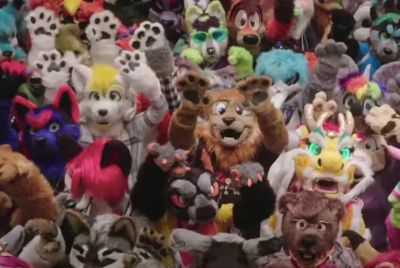Furries are not Boylovers: Difference between revisions
From BoyWiki
No edit summary |
No edit summary |
||
| Line 8: | Line 8: | ||
*Furries are not boylovers but apparently some boylovers are furries. | *Furries are not boylovers but apparently some boylovers are furries. | ||
Furries are people who enjoy dressing in costumes of anthropomorphic animal characters. Some of the characters are from [[anime]] or other cartoons. | Furries are people who enjoy dressing in costumes of anthropomorphic animal characters. Some of the characters are from [[anime]] or other cartoons. Many furries have our own created characters, also known as fursona(s). These characters can represent many things, such as their interests, a spiritual guide, or things they find attractive or perhaps an alternative version of themselves. | ||
During the mid-1980s, furries as a group or "subculture" grew out of science fiction fandom communities to having their own [https://en.wikipedia.org/wiki/ConFurence conventions] in 1989. | During the mid-1980s, furries as a group or "subculture" grew out of science fiction fandom communities to having their own [https://en.wikipedia.org/wiki/ConFurence conventions] in 1989. | ||
Revision as of 20:40, 4 February 2022
|
News

Furries are people who enjoy dressing in costumes of anthropomorphic animal characters. Some of the characters are from anime or other cartoons. Many furries have our own created characters, also known as fursona(s). These characters can represent many things, such as their interests, a spiritual guide, or things they find attractive or perhaps an alternative version of themselves. During the mid-1980s, furries as a group or "subculture" grew out of science fiction fandom communities to having their own conventions in 1989. The media has portrayed furries as group with a sexual fetish for furry costumes however this is not a complete or accurate depiction of what furries culture entails. Group demographics
|